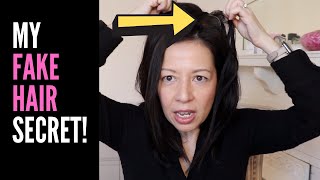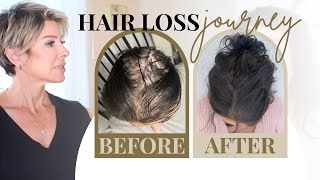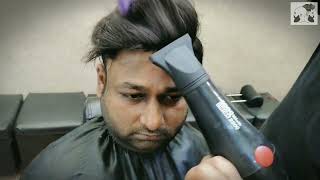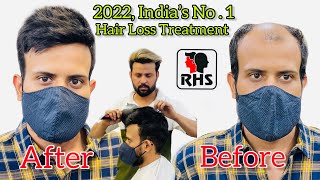Got Uneven Hairline? Here’s What You Can Do
- Posted on 11 September, 2020
- Hot Topic
- By SNY Admin
There is a likelihood you have read the works of Jodi Picoult, the American author, famous for tackling topical issues such as abortion. Well, she hasn’t shied away from talking about an uneven hairline, which is the bane of many men and women. She said- “You can have the best intentions, but the moment there is a hairline crack, it is only a matter of time before you go to pieces. “
What is a hairline? Your hairline is a line of hair follicles that constitute the outside edges of your hair. An uneven hairline lacks symmetry, usually with one side having more or less hair than the other. And just before you think that you have a strange malady, you should know that an uneven hairline is reasonably common and that it afflicts both men and women.
That said, you don’t have to crumble because of an uneven hairline. Why? Because there are solutions are out there that are specialized to address this issue comprehensively. One of the answers, and probably the best solution, is the scalp micropigmentation procedure. But before we dwell into that, let’s understand what causes an uneven hairline and hair loss in general. There are four major causes of the uneven hairline.
Causes of an Uneven Hairline
Genetics
An uneven hairline often looks like a receding hairline caused by hair loss. If members of your family have receding hairlines, then your uneven hairline might be inherited. If you are going through hair loss at a much faster rate than usual, then alas, my friend, you have your bloodline to growl and shake your fist at, indeed. Your hair filaments have a DNA blueprint, i.e., if your dad (and grandfather, et cetera.) has suffered from hair loss, the math says that you are likely to go through it.
Male Pattern Baldness
Male pattern baldness is also known as androgenetic alopecia. Usually, it comprises of a receding hairline — often in an M-shaped pattern and thinning hair around the head’s crown.
Men that are susceptible to hair possess hair follicles that are predisposed to DHT hypersensitivity, which tends to shrink the hair floccules until the hair growth cycle stops, causing hair loss.
Ultimately, that uneven hairline turns into balding, with hair now growing from above the ears and cuts across the back of the head in a horseshoe pattern.
There’s also female pattern hair loss that presents with a different pattern. Scientifically, clinicians deploy the Ludwig Classification to lend a description to female pattern hair loss. Type I is minimal thinning hair that hairstyling techniques can disguise. Type II causes diminished volume and a noticeable expansion of the mid-line part. Type III causes diffused thinning hair, with a see-through countenance of the crown. Hair loss in women can also be a result of physical changes such as childbirth.
Traction Alopecia
Traction alopecia is gradual hair loss as a result of pulling force, mostly during hair-dressing- such as putting a ponytail, braids, or buns. Traction alopecia can occur in both males and females, even if there is no lineage history of pattern baldness and uneven hairlines.
Hair Transplant
An uneven hairline could be the consequence of a botched hair transplant. Hair transplants are delicate procedures, and if proper care doesn’t take consideration of your natural look and hair growth pattern, then it will be improper. FUT and FUE are more involving procedures to address hair loss.
In 1939, Japan performed the first transplant with individual scalp hairs. Subsequently, physicians came up with the “plug” method, which is fundamentally relocating large floccules of hair. And as time went by, surgeons started using mini-and-minor-sprouts of hair on the scalp.
What is Scalp Micropigmentation?
Scalp micropigmentation is a procedure that deploys a stippling pattern tattoo that imitates hair filaments cut close to the scalp. As a relatively novel technique, scalp micropigmentation can substantially address the cosmetic issues that arise from the hair loss conditions mentioned at the outset.
The purpose of scalp pigmentation is to replicate your natural hair follicles while simultaneously strengthening and adding density to the thinning sections.
It helps to know that micropigmentation scalp treatments have been around since the 1970s. However, the procedure did not ultimately develop until 2002, where the first general treatment made to the public happened in 2006.
Benefits of Scalp Micropigmentation
- It makes it look like you have a fuller, thicker head of hair
- Excellent natural-looking front and side photo profiles of your hairline
- It camouflages alopecia symptoms in perpetuity, whether they are severe or recurrent
- It covers scars from a hair transplant or FUE surgery
- It helps in concealing birthmarks or burn or accident-related scars
- It combines well with a hair transplant to offer additional density
- Lifestyle change
- One can remove it
How Is Scalp Micropigmentation Done?
Scalp micropigmentation treatment uses microneedles that add a layer of pigment dots on your scalp like getting a tattoo. Micropigmentation scalp treatments customarily happen over three sessions. That said, there is some variation that is dependent on your hair loss severity, the style you desire, and other elements that come into play.
If this is your first micropigmentation scalp treatment, at a consultation, you will meet with a technician who will be doing your treatment. You will discuss all the pertinent requirements, including your hair color and skin tone, which need to be right to obtain that natural feel.
Conclusion
You don’t need to worry a lot about your receding hairline or your receded hairline, or your total hair loss. All you need to do is internalize this article and seek out a hair loss expert. One of the entities that have such experts is the Belgravia Centre. You can find the Belgravia Centre in London. But if you don’t live in London, Belgravia Centre has an online consultation form that you can fill. The online consultation questionnaire won’t take you more than 10 minutes to complete. The purpose of the online consultation questionnaire is to help their hair loss experts with the information they can use to determine a course of home-use treatment.
Hair loss can be detrimental mentally, so remember to seek counsel if you are struggling with your mental health as well as a result of the hair loss.
Frequently Asked Questions
How Can I Even Out My Hairline?
You can even out your hairline by getting a scalp micropigmentation. You can still get one for your receding hairline.
Is an Uneven Hairline Normal?
Yes, it is common in both genders.
Does Uneven Hairline Mean You Are Balding?
An uneven hairline doesn’t necessarily mean you are balding. It could mean your face is changing, which happens with aging—for example, a maturing hairline in young boys when going through puberty. A maturing hairline rounds out in response to the aforementioned in boys.
Why Is Only One Side of Hairline Receding?
Your hairline is receding on a single side because your hairline doesn’t necessarily recede at the same rate. Hairlines receding do not do so at the same pace. This phenomenon is a tell-tale sign of male pattern baldness.




